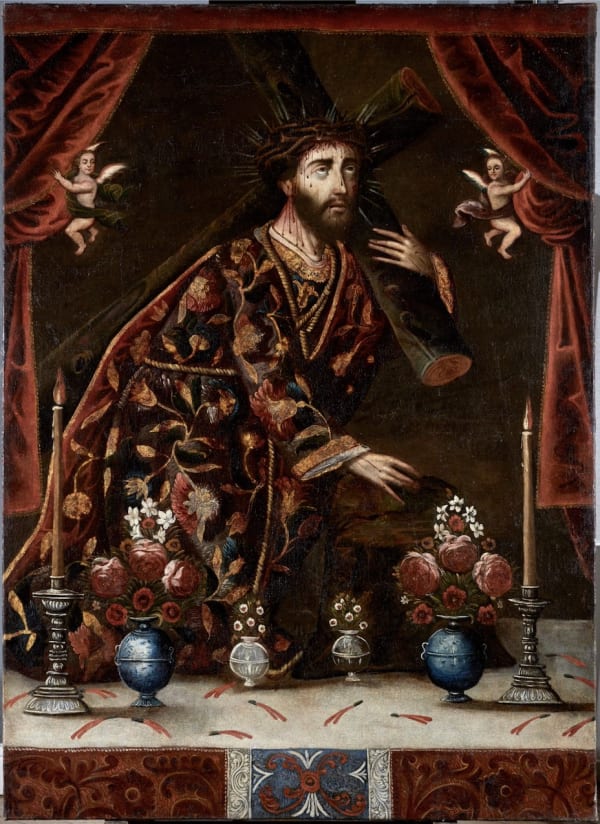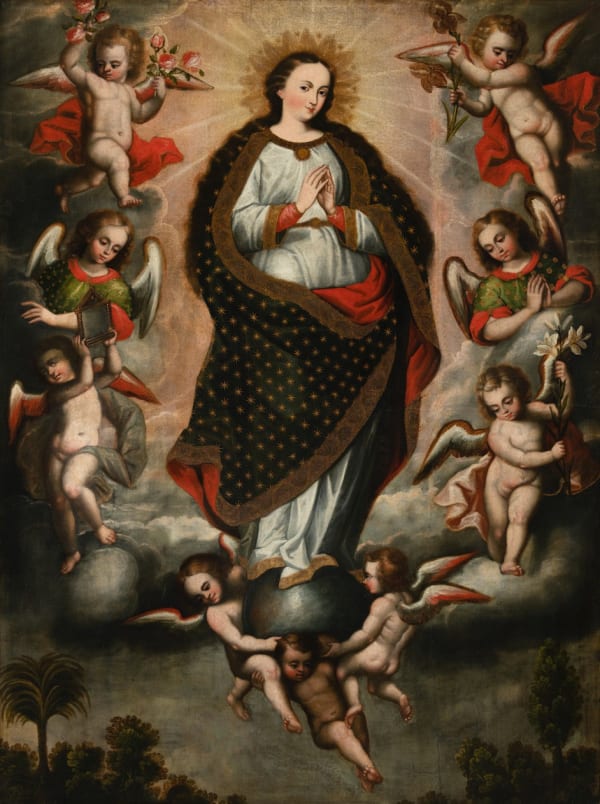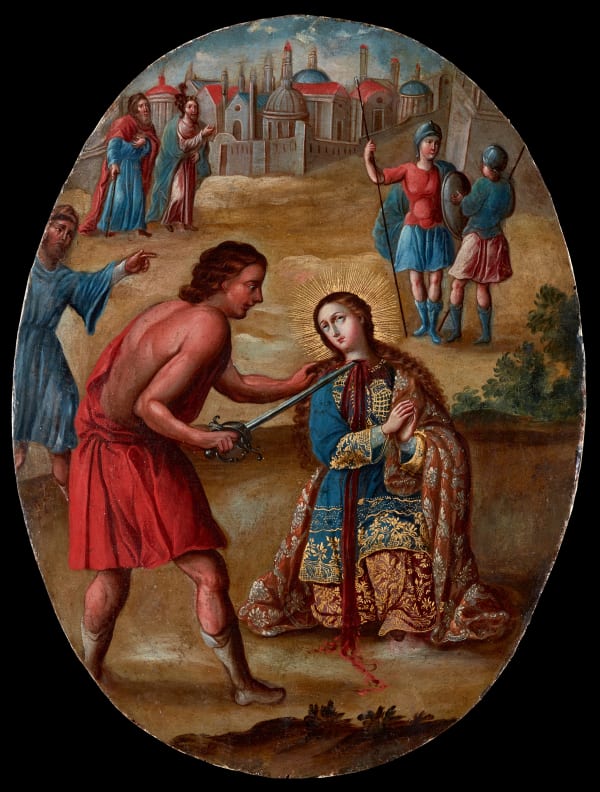One might say that painting in the Peruvian Viceroyalty began with the Spanish precursor, the sea captain and painter Diego de Mora, who executed the portrait of Atahualpa (Cuzco 1500? – Cajamarca 1533). Viceregal painting would subsequently blossom with three key artists who arrived from Italy: Bernardo Bitti in 1575, Matteo Pérez de Alesio in 1588 and Angelino Medoro in about 1600, developing a Mannerist style. Latin American Baroque would then emerge as a dominant trend in Lima, subsequently giving rise to the peerless School of Cuzco, which was supported by the patron of the arts Bishop Manuel de Mollinedo y Angulo (1626 – 1699). This convergence in painting between the West and the powerful indigenous presence produced a marvelous syncretism in which art distanced itself somewhat from the dominant Western influences, maintaining certain of its own native features. Workshops produced huge numbers of paintings to meet the demands of a number of cities across the Viceroyalty, as well as ongoing orders for works to be exported abroad.






















